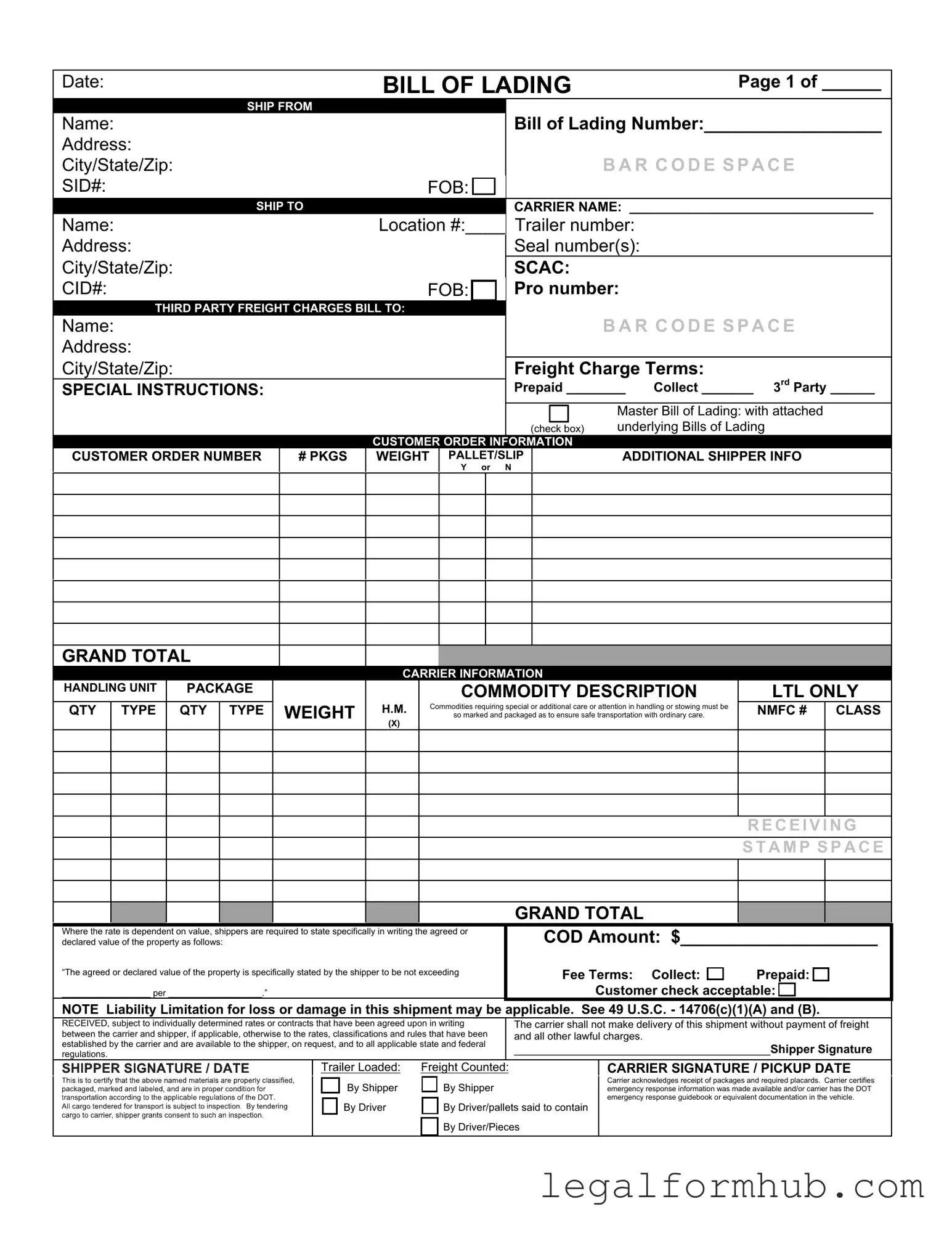The Bill of Lading (BOL) is often compared to a Delivery Order. A Delivery Order is a document that instructs a carrier or warehouse to release goods to a designated party. Similar to the BOL, it serves as proof of ownership and facilitates the transfer of goods. However, while the BOL is primarily used in shipping, the Delivery Order is more focused on the final delivery process, making it essential for the recipient to claim their cargo.
A Commercial Invoice is another document that bears resemblance to the Bill of Lading. This invoice details the transaction between the seller and buyer, including the goods sold, their value, and payment terms. Like the BOL, it is crucial for customs clearance and international shipping. The Commercial Invoice provides a financial record, while the BOL serves as a receipt for the cargo being transported.
The Packing List is similar to the Bill of Lading in that it provides detailed information about the contents of a shipment. This document lists each item included in the shipment, along with quantities and descriptions. While the BOL confirms the agreement between the shipper and carrier, the Packing List serves as a guide for the receiver to verify that the correct items have been delivered.
In addition to the various shipping documents discussed, it's important to recognize the role of the Employment Verification form, which employers use to confirm an employee's work history and eligibility for employment. Understanding its importance can safeguard both employer interests and employee rights, ensuring compliance and operational efficiency. To start the process of completing necessary employment documentation, you can Fill PDF Forms that simplify the verification process.
A Freight Bill is closely related to the Bill of Lading as it outlines the charges for transporting goods. This document is issued by the carrier and includes details such as the shipping route, weight, and cost of services. While the BOL acts as a contract for the shipment, the Freight Bill focuses on the financial aspect of the transportation, ensuring that all parties are aware of the costs involved.
The Air Waybill (AWB) is another document that shares similarities with the Bill of Lading, particularly in air freight. The AWB serves as a contract between the shipper and airline, detailing the terms of transport. Like the BOL, it functions as a receipt for the goods and can be used for tracking shipments. However, the AWB is specifically designed for air transport, whereas the BOL can be used for various modes of shipping.
A Certificate of Origin is often compared to the Bill of Lading due to its role in international trade. This document certifies the country of origin of the goods being shipped. While the BOL confirms the transport arrangement, the Certificate of Origin is essential for determining tariffs and compliance with trade regulations. Both documents play vital roles in ensuring a smooth shipping process across borders.
The Letter of Credit (LC) is another important document related to the Bill of Lading. An LC is a financial instrument used in international trade to guarantee payment to the seller, provided that specific conditions are met. While the BOL serves as proof of shipment, the Letter of Credit ensures that the seller will receive payment once they fulfill the terms of the sale, creating a secure transaction environment.
The Export License is similar to the Bill of Lading in that it is required for shipping certain goods across international borders. This document grants permission from the government to export specific products. While the BOL facilitates the transport of goods, the Export License ensures compliance with regulations, making it essential for legal and smooth export processes.
A Consignment Note is akin to the Bill of Lading, especially in the context of logistics. This document serves as a record of the shipment and outlines the responsibilities of the sender and receiver. While the BOL acts as a receipt and contract, the Consignment Note focuses on the details of the consignment, ensuring that both parties understand their obligations during the shipping process.
Finally, the Insurance Certificate is another document that complements the Bill of Lading. This certificate provides proof that the goods being shipped are insured against loss or damage during transit. While the BOL serves as a contract for the shipment, the Insurance Certificate offers peace of mind, ensuring that the financial risks associated with shipping are covered in case of unforeseen events.
